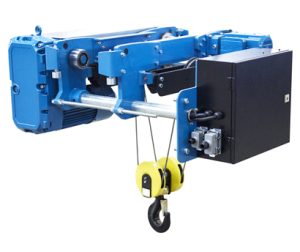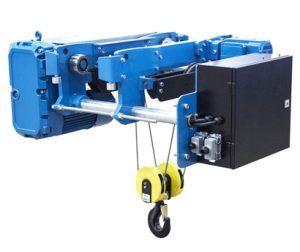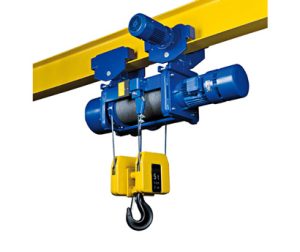Algemene foute en herstelmetodes van elektriese hysbakke
2025-06-11
Electric hoists are the workhorses of countless industries – construction, vervaardiging, warehousing, and workshops. Their reliability is crucial for productivity and, most importantly, veiligheid. Nietemin, like any mechanical and electrical equipment, they are prone to wear, tear, and occasional faults. Knowing the common problems and basic troubleshooting steps can save significant downtime and repair costs.
Aanlyn klets
Why Regular Maintenance & Timely Repair Matter:
-
Safety First: Hoist failure can lead to dropped loads, catastrophic accidents, en ernstige besering. Regular checks prevent disasters.
-
Reduced Downtime: Spotting and fixing small issues early prevents major breakdowns that halt operations.
-
Extended Equipment Life: Proper care and timely repairs maximize the electric hoist’s operational lifespan.
-
Cost Savings: Preventative maintenance and minor repairs are far cheaper than major overhauls or replacements.

Common Electric Hoist Faults and How to Address Them
Here’s a breakdown of frequent issues, their likely causes, and potential repair methods:
Hoist Doesn’t Power On / No Response:
-
-
Causes:
- Kragtoevoer mislukking (tripped breaker, geblaas lont, disconnected plug/cable).
- Faulty main power switch or disconnect.
- Damaged power cable or internal wiring.
- Defective control pendant/cord.
- Overload protection activated (thermal cutout).
-
Repair Methods:
- Check Power Source: Verify outlet voltage, reset breakers, replace fuses.
- Inspect Cables & Plugs: Look for visible damage, kinkels, of brandwonde. Toets kontinuïteit.
- Test Control Pendant: Check for broken wires in the cord, damaged buttons. Try a known-good pendant if possible.
- Check Thermal Cutout: Allow motor to cool (can take 30+ mins), then reset if applicable.
- Inspect Internal Wiring: (Qualified Personnel Only) Check connections at main switch, kontakters, and terminals for looseness or damage.
Motor Hums but Doesn’t Lift/Lower:
-
-
Causes:
- Single-Phase Motors: Faulty start capacitor or centrifugal switch.
- Fase -verlies (3-Phase Motors): Blown fuse, loose connection on one phase.
- Mechanically seized brake.
- Severely overloaded hoist.
- Worn or damaged gears.
-
Repair Methods:
- Check Capacitor (Single-Phase): Test capacitance and ESR; replace if bulging, leaking, or out of spec.
- Check Phases (3-Fase): Verify voltage on all three phases at the hoist input. Check fuses and connections.
- Inspect Brake: Manually release brake (if possible per manual) to see if motor then runs. Adjust or replace seized brake.
- Verify Load: Ensure load is within rated capacity. Remove overload.
- Listen/Feel: If motor hums strongly but load doesn’t budge, internal gear damage is likely – requires professional inspection/repair.
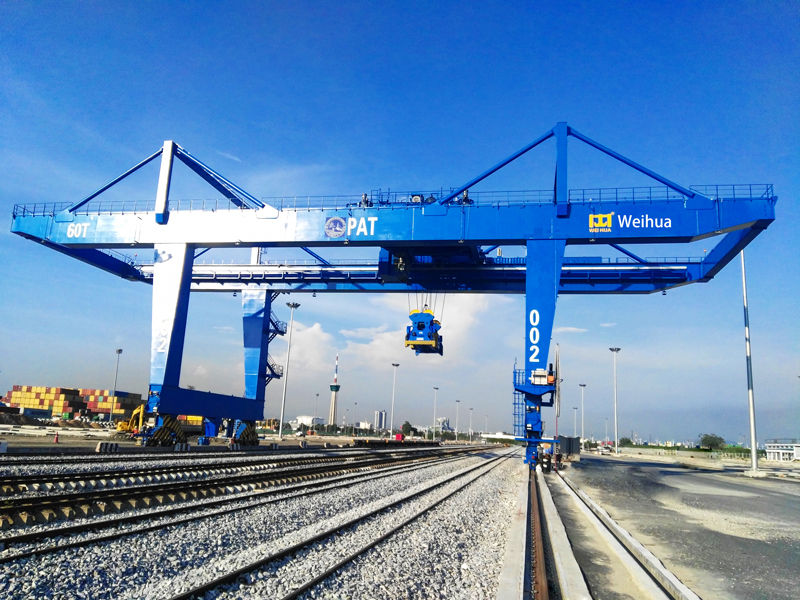
Hoist Operates Intermittently or Erratically:
-
-
Causes:
- Loose or corroded electrical connections (especially grounds).
- Failing control pendant or damaged control cable (intermittent shorts/opens).
- Worn or sticking contactors/relays in the control circuit.
- Limit switch malfunction (prematurely cutting power).
- Voltage fluctuations.
-
Repair Methods:
- Inspect Connections: Tighten all terminal screws. Clean corrosion from connections.
- Jiggle Test Control Pendant/Cable: Operate while gently flexing the cord near plugs and strain reliefs. Replace if fault occurs.
- Check Contactors/Relays: Listen for consistent clicking. Inspect contacts for pitting/burning. Clean or replace.
- Test Limit Switches: Check activation and wiring. Adjust or replace if faulty.
- Monitor Voltage: Ensure supply voltage is stable and within elektriese takel specifications.
Oormatige geraas tydens werking:
-
-
Causes:
- Grinding/Grating: Gedra, damaged, or poorly lubricated gears; beskadigde laers.
- Squealing/Squeaking: Worn brake lining; lack of lubrication on chains, rigting, or wire rope.
- Banging/Clunking: Loose mounting bolts; excessive chain/wire rope slack; damaged hook or latch.
- Electrical Humming/Buzzing: Loose laminations in motor or transformer; faulty contactor/relay.
-
Repair Methods:
- Smeer: Apply correct lubricant to gears, rigting, ketting (per manufacturer specs). Never lubricate brake surfaces!
- Inspect Gears/Bearings: Look for metal chips in oil (ratkas), feel for roughness/play. Replace worn components.
- Tighten Mounting Bolts: Ensure hoist is securely fastened to its support.
- Adjust Brake: If squealing occurs only when stopping, brake adjustment may be needed.
- Inspect Chain/Rope/Hook: Check for damaged links, kinked rope, worn hook throat, or faulty latch. Replace as necessary.
- Secure Electrical Components: Tighten core laminations (if accessible) or replace faulty electromagnetic components.
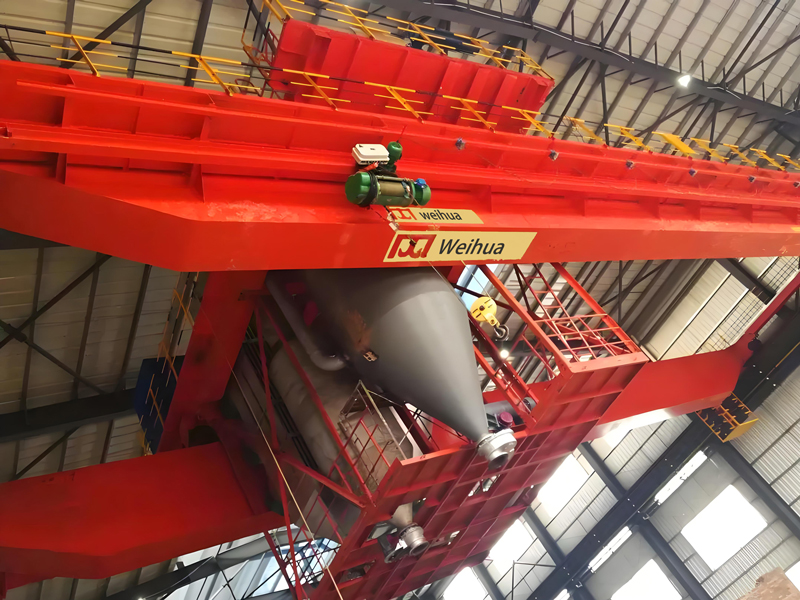
Overheating Motor:
-
-
Causes:
- Excessive duty cycle (operating too long/often beyond rating).
- Overloading.
- Low supply voltage (causes motor to draw more current).
- Poor ventilation (dirt/debris blocking cooling fins).
- Worn bearings causing drag.
- Brake dragging.
-
Repair Methods:
- Allow Cooling: Stop operation immediately. Let motor cool completely.
- Check Load & Pligsiklus: Ensure operation is within hoist’s rated capacity and duty cycle (Bv., not continuous use on an intermittent-rated hoist).
- Verify Voltage: Ensure supply voltage matches hoist requirements.
- Clean Motor: Remove dirt and debris from cooling fins and housing.
- Check Bearings: Replace if rough, noisy, or seized.
- Adjust/Repair Brake: Ensure brake releases fully when motor is energized.
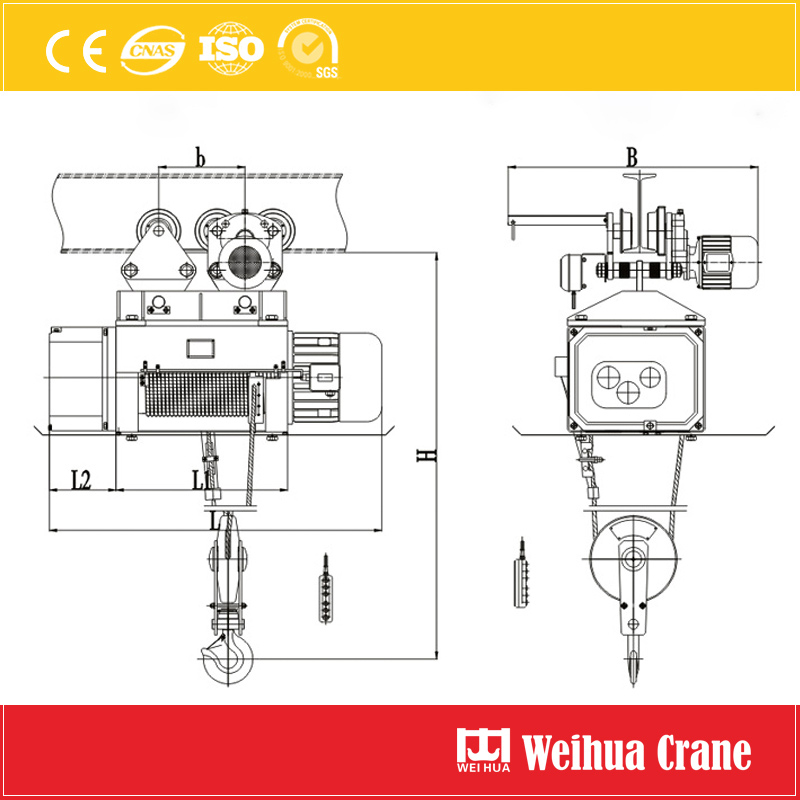
Rem gly of hou nie las nie:
-
-
Causes:
- Worn or oil-contaminated brake linings/disc.
- Incorrect brake adjustment (too loose).
- Weak or broken brake spring.
- Damaged brake mechanism.
-
Repair Methods:
- Adjust Brake: Follow manufacturer’s procedure precisely for adjusting brake gap/torque. Incorrect adjustment is dangerous.
- Inspect Linings/Disc: Clean off oil/grease contamination (use brake cleaner). Replace if worn beyond limits.
- Check Brake Spring: Replace if broken or weakened.
- Inspect Mechanism: Look for broken parts, seized pins, of oormatige slytasie. Repair or replace assembly.
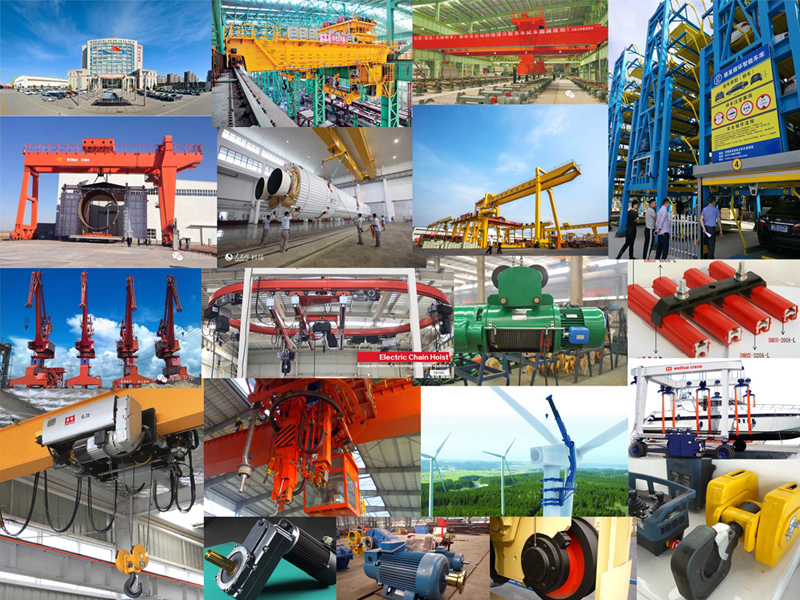
Crucial Safety Precautions Before ANY Repair
-
LOCKOUT/TAGOUT (Hart): This is non-negotiable. Isolate the hoist from all energy sources (electrical, hydraulic, pneumatic) and secure it with a lock and tag before starting any work.
-
Ondersteun die vrag: If the load is suspended, lower it safely to the ground or secure it with proper blocking before LOTO.
-
Refer to the Manual: Always consult the hoist’s specific service manual for diagrams, specifications, and safety procedures.
-
Ken u perke: Many repairs, especially involving internal gears, remme, and high-voltage components, require specialized knowledge, gereedskap, and certifications. Do not attempt complex repairs unless you are fully qualified. As u twyfel, call a professional hoist technician.
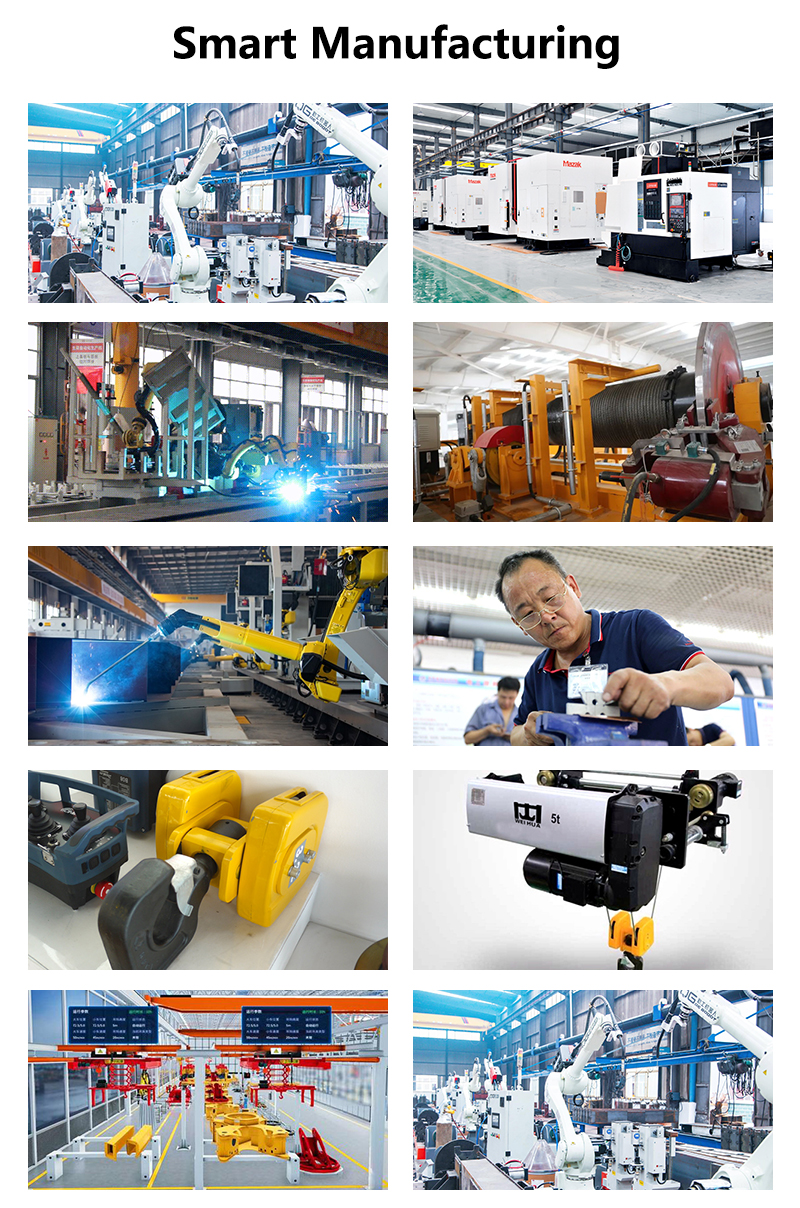
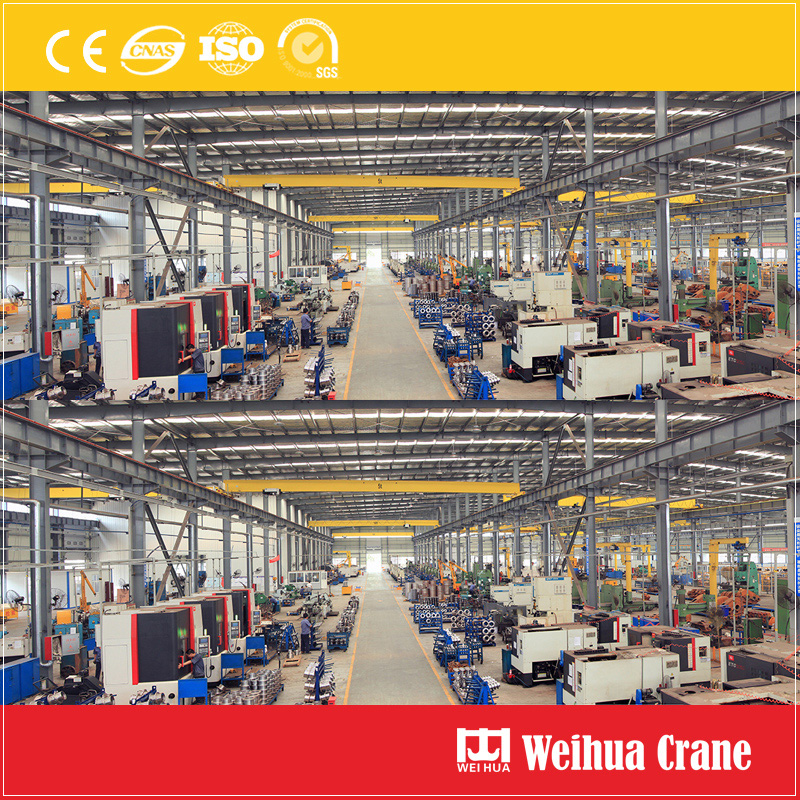
Voorkoming is die sleutel:
- Follow a Strict Maintenance Schedule: Perform daily pre-operation checks (visual inspection, function test, listen for noises) and periodic inspections/lubrication as per the manufacturer’s recommendations.
- Operate Correctly: Never exceed rated capacity. Avoid shock loading. Use smooth control inputs.
- Keep it Clean: Prevent dirt, stof, and moisture ingress.
- Proper Storage: Store in a clean, dry place when not in use.
Understanding common electric hoist faults empowers you to perform basic troubleshooting and minor repairs safely, minimizing costly downtime. Nietemin, always prioritize safety through rigorous LOTO procedures and recognize when a problem requires the expertise of a qualified hoist repair technician. Consistent preventative maintenance remains the most effective strategy for ensuring the long, veilig, and reliable service life of your essential lifting equipment. Don’t wait for a breakdown – schedule your next inspection today!








